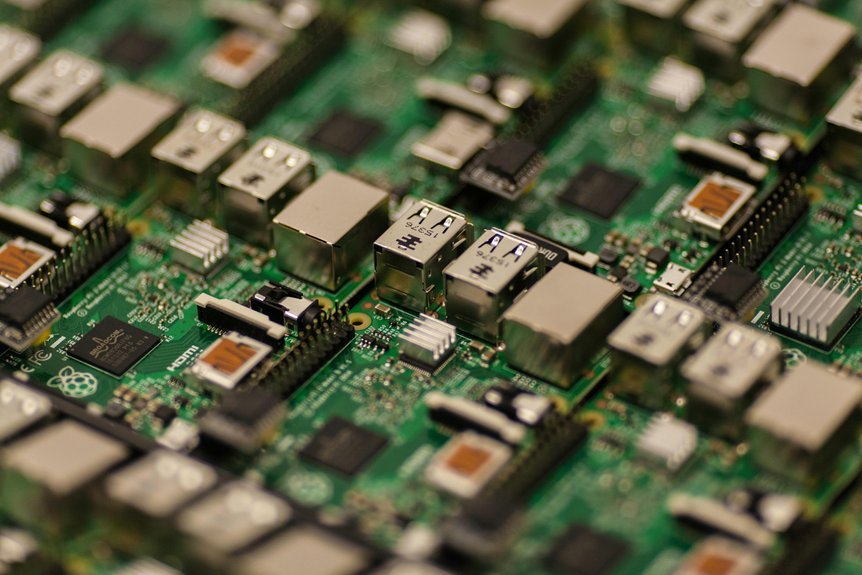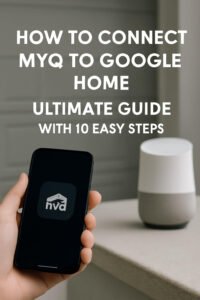Steam VR Home is the default virtual environment that users experience when launching Steam VR. While it offers an immersive and interactive space, not everyone finds it useful or desirable. Some users prefer to skip Steam VR Home to streamline their VR experience or boost system performance. If you’re wondering how to disable Steam VR Home, this detailed guide will walk you through seven simple yet powerful steps to take control of your VR environment efficiently.
In this article, we’ll explore the reasons to disable Steam VR Home, provide detailed instructions on how to do it, and offer helpful tips to optimise your overall VR experience. Whether you are a casual VR user or a seasoned enthusiast, understanding how to tweak Steam VR settings can significantly enhance your enjoyment.
Understanding Steam VR Home and Its Features
Steam VR Home is the virtual lobby or space that opens when you launch Steam VR. It functions as a hub where users can interact with their environment, launch VR apps, or socialise with friends in VR. The environment includes various customizable elements like virtual furniture, rooms, and interactive objects.
Although it adds a layer of immersion, Steam VR Home also requires resources to run smoothly. For users with less powerful PCs or those who prefer jumping directly into their VR applications, Steam VR Home can feel like an unnecessary delay or performance burden.
Reasons to Disable Steam VR Home
You might wonder why someone would want to disable Steam VR Home. Here are a few compelling reasons:
- Faster VR Launch: Skipping the Steam VR Home environment means you can jump straight into your VR game or app, saving time.
- Improved Performance: Disabling Steam VR Home can reduce the load on your GPU and CPU, resulting in smoother VR experiences.
- Personal Preference: Some users prefer a minimalist VR experience without the distractions or animations of the home environment.
- Troubleshooting: If Steam VR Home causes crashes or glitches, disabling it can help isolate or fix problems.
Understanding these reasons can help you decide if disabling Steam VR Home is right for you.
Preparing Your System for Disabling Steam VR Home
Before making changes, it’s important to prepare your system to avoid issues:
- Backup Your Settings: Make a note or screenshot of your current Steam VR settings in case you want to revert.
- Update Steam VR: Ensure you have the latest Steam VR version for compatibility.
- Check System Requirements: Verify that your PC meets minimum VR specs and that your VR headset firmware is updated.
- Close Running Applications: Exit any VR games or apps before adjusting settings.
By preparing carefully, you minimise the risk of system instability when disabling Steam VR Home.
Step 1 – Accessing Steam VR Settings
The first step to disabling Steam VR Home is accessing the Steam VR settings panel:
- Launch Steam on your PC.
- Connect your VR headset and launch Steam VR.
- Once Steam VR is running, click on the menu icon (three horizontal lines) in the upper left corner of the Steam VR window.
- Select Settings from the dropdown menu.
- In the Settings panel, navigate to the Developer tab (if you don’t see it, enabling developer mode on your Steam VR may be necessary).
This area contains the options you need to adjust to disable Steam VR Home.
Step 2 – Navigating to Developer Settings
The developer settings are hidden by default because they include advanced options:
- In Steam VR Settings, locate the Developer tab.
- If you do not see this tab, you may need to enable developer mode in Steam VR:
- Open Steam.
- Click on Steam in the top-left menu and select Settings.
- Go to Account and ensure you are opted into the Steam Beta program (this may enable advanced features).
- Restart Steam VR.
- Once the Developer tab is visible, open it to access deeper configuration settings.
These developer tools unlock the ability to disable the Steam VR Home environment.
Step 3 – Disabling Steam VR Home Environment
To turn off Steam VR Home:
- Within the Developer tab, look for the option named Start Steam VR Home when Steam VR launches or a similar toggle.
- Uncheck or toggle off this option.
- Optionally, you may find settings related to the default VR environment or home environment paths. Ensure these do not point to Steam VR Home.
- Save your changes and exit the settings.
By toggling this setting off, Steam VR will skip loading the Home environment and take you directly to your VR apps.
Step 4 – Using Third-Party Tools for VR Customisation
For users seeking more control, third-party tools can offer additional customisation beyond what Steam VR provides:
- OpenVR Advanced Settings: A popular tool that allows you to tweak performance, disable the home environment, and customise controllers.
- OVR Toolkit: Useful for overlay customisation and VR desktop management.
- SideQuest (for Oculus/Meta devices): Allows sideloading and environment modifications.
While these tools can enhance your experience, use them carefully and only download from trusted sources to avoid security risks.
Step 5 – Testing the Changes
After disabling Steam VR Home, it’s important to confirm the settings worked properly:
- Restart Steam VR.
- Observe whether the Steam VR Home environment loads.
- If it’s disabled correctly, you should be taken straight to your VR dashboard or directly into the app/game you launch.
- Test launching different VR titles to ensure stability.
- If you experience crashes or errors, revisit the settings or consult troubleshooting tips.
Testing helps ensure a smooth and optimised VR experience without unwanted interruptions.
Step 6 – Troubleshooting Common Issues
Disabling Steam VR Home can sometimes cause hiccups. Here’s how to handle common problems:
- VR Crashes on Launch: Try verifying the Steam VR files’ integrity or reinstalling the software.
- Steam VR Home Still Loads: Double-check developer settings and toggles.
- Performance Drops or Artifacts: Update your GPU drivers and close background apps.
- Settings Not Saving: Run Steam VR as an administrator or check file permissions.
By systematically troubleshooting, you can solve most issues that arise when disabling Steam VR Home.
Step 7 – Re-Enabling Steam VR Home (If Needed)
If you decide to revert the change:
- Open Steam VR Settings > Developer tab.
- Re-enable the Start Steam VR Home when Steam VR launches option.
- Restart Steam VR.
- Confirm the home environment loads as before.
Re-enabling Steam VR Home is quick and safe, letting you return to the default VR lobby anytime.
Best Practices for Optimising Your VR Experience
Beyond disabling Steam VR Home, consider these tips to improve your VR sessions:
- Regularly update your VR headset firmware and Steam VR client.
- Customise your VR settings for comfort and performance.
- Use USB 3.0 ports and recommended cables for stable tracking.
- Keep your play area free of obstacles.
- Adjust graphical settings within games for smooth frame rates.
Combining these practices with disabling Steam VR Home can lead to a noticeably better VR experience.
FAQs About Disabling Steam VR Home
Will disabling Steam VR Home improve VR game performance?
Yes, it can reduce system load by skipping the home environment, freeing resources for games.
Is disabling Steam VR Home reversible?
Absolutely. You can re-enable it anytime through Steam VR Developer settings.
Will disabling Steam VR Home affect multiplayer or social features?
It might limit access to the default social spaces, but most multiplayer games will function normally.
Can I disable Steam VR Home without developer mode?
Developer mode is typically required to access the needed settings, so enabling it is recommended.
Does disabling Steam VR Home void any warranties?
No, changing Steam VR settings does not affect hardware warranties.
What if Steam VR crashes after disabling Steam VR Home?
Try re-enabling it, updating drivers, or reinstalling Steam VR to resolve stability issues.
Conclusion and Final Thoughts
Disabling Steam VR Home can be a powerful tweak for users seeking faster VR access, better performance, or a simplified experience. By following these seven simple steps, you take full control over your Steam VR environment with minimal hassle. Remember to prepare your system properly, carefully adjust settings, and test thoroughly to ensure the best outcome.
Optimising your VR experience isn’t just about disabling Steam VR Home; combining this with regular updates and good VR habits can transform your time in virtual reality. Feel free to experiment and find what works best for you!













